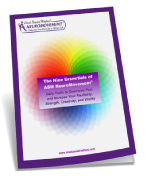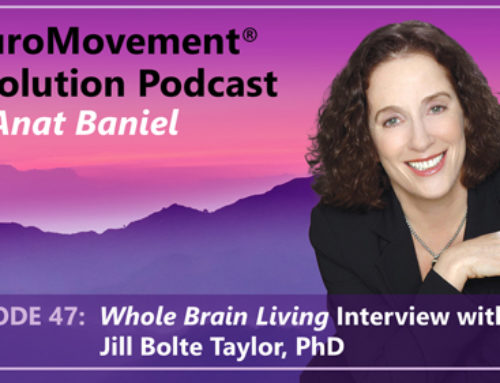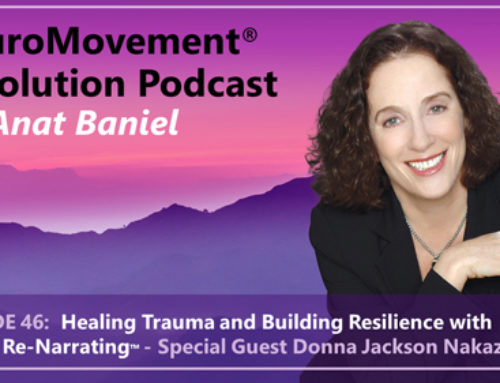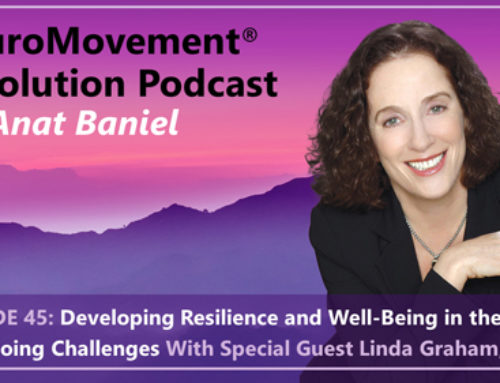How Come Anat Baniel Method® NeuroMovement® Works with Both Children & Adults? Part 2
What Adults Can Learn from Children
In my previous blog post How Come the Anat Baniel Method Works with Both Children and Adults? Part 1, I pointed out some of the similarities between children and adults, and their ability to change and improve. In this blog post, I would like to point out some differences that leave adults at a disadvantage, and provide the opportunities for the adult’s brain to work as well as the child’s brain.
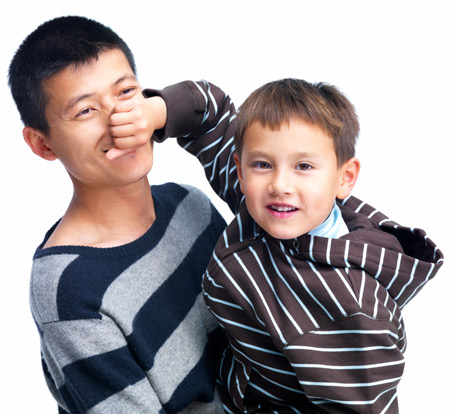 During my many years of practice with adults and children with special needs, I have observed some important differences:
During my many years of practice with adults and children with special needs, I have observed some important differences:
- Children don’t have goals that adults do; they stumble onto the next skill or discovery.
- Children do have strong desires but they are unattached to how they get them fulfilled.
- Children are abundant and free with their enthusiasm and present in the moment.
Children normally accept and integrate positive changes immediately, oftentimes appearing as if they have been doing or being this new way forever. Like children that begin crawling for the first time, they simply do it. They don’t usually spend time wondering if they are really crawling, doing it the “right” way, or how to “keep it.”
In other words, the children I work with tend to have an easier time at embodying the Enthusiasm and Flexible Goals Essentials. I often ask my adult clients to read the chapters on Enthusiasm and Flexible Goals from my book Move into Life. And very frequently, I suggest to parents to read these same chapters in Kids Beyond Limits. The “childlike”qualities mentioned above are actually representative of a highly potent brain that is not only able to create new possibilities, but to adopt them quickly, learn, change, and transform for the better with greater and greater ease.
It is very common for the adults who come to me with a certain pain or limitation they would like to transcend, understandably focus on the pain or the limitation, and whether there has been an improvement in their condition. However, because of the way the brain works, focusing one’s attention on the problem can actually groove in the patterns of the problem more deeply. As a result of this focus, adults fail to see and appreciate other changes that have happened and are necessary for the improvement they are looking to get.
And when they do notice changes, the tendency is to see it as unimportant (i.e., they fail at enthusiasm at that moment and miss the opportunity for the brain to groove in the seemingly unimportant changes). Oftentimes, I’ve ended a session with a client and, when I ask them if they notice some change (say, that they are breathing more freely or that their shoulders are more relaxed), the response is: “Yes, but I still can’t touch my toes!” or “Yes, but I still have a bit of pain.” Or “Yes, but I still can’t do….”
What I see when looking at them in that moment are amazing changes representing a brain that is waking up to do its job better; changes that can enhance their well-being, and that are steps along the way to greater improvement. When they look at themselves, they might see failure because their goal has not yet been attained. In essence, at that moment, they fail to be enthusiastic, denying their brain this extra support at creating new and more effective patterns.
 Children, on the other hand, seem to have endless fascination and enthusiasm for the smallest changes and novelty in their experience. It’s quite common for a child to discover a new sensation in the tiniest part of their body when doing a simple movement. For example, their foot touches the floor differently when they are walking and they become completely engrossed by it. They experience surprise, excitement, and enthusiasm. They step this new way over and over again. They experiment with other movements to see if the feeling will translate elsewhere…all the while not knowing that they are turning themselves into potentially being better future tango dancers, sprinters, or soccer players.
Children, on the other hand, seem to have endless fascination and enthusiasm for the smallest changes and novelty in their experience. It’s quite common for a child to discover a new sensation in the tiniest part of their body when doing a simple movement. For example, their foot touches the floor differently when they are walking and they become completely engrossed by it. They experience surprise, excitement, and enthusiasm. They step this new way over and over again. They experiment with other movements to see if the feeling will translate elsewhere…all the while not knowing that they are turning themselves into potentially being better future tango dancers, sprinters, or soccer players.
The child with special needs who cannot yet walk but for the first time is able to sit himself up and reach for a toy to play with, is enthralled and engrossed in his newfound experience. He is not disappointed that he is not walking yet. He is not even thinking about walking at that moment.
Very often, the parents are the ones who need to be loved, supported, and encouraged to experience joy and be enthusiastic about these changes in their child. It is also imperative that they do so, as I discuss in the Enthusiasm chapter in Kids Beyond Limits, because the parents’ internal, quiet, amplified enthusiasm is felt by the child and helps drive these wonderful new changes more deeply in their child’s brain.
I often say to parents of children with special needs but it is true for ALL children and adults: The same brain that learned how to roll, crawl, walk, sing, and play is the same brain that will learn the next thing and next thing, provided it gets the conditions it needs. And this is what the Nine Essentials are for.
Probably by now, you can see how closely enthusiasm is tied to flexible goals and to being present in the here and now. The enthusiasm the children experience is tied in part to how much they pay attention to their present experience and their current state of being, instead of focusing on some far-off and seemingly unattainable (or unattained) goal.
Don’t let a sense of an embarrassment, a fear of future disappointment, or questioning how real what you feel is, stop you from allowing the full empowerment that enthusiasm and flexible goals will give you, and the enormous vitality and joy that comes with it!
Please share your experiences with us on social media. I’d love to hear from you!

